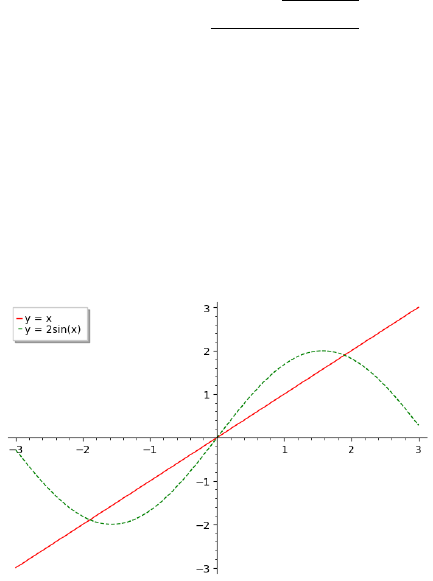Project Report Guidelines
Douglas B. Meade
Department of Mathematics, University of South Carolina
The purpose of a project report is to present your answer to the project problem(s) and to
communicate the mathematical ideas and methods used to obtain your answer. This information
should be a concisely worded and well-organized paper that is understandable to any other student
in this course.
The format of a typical project report is described below. This format is quite general, but is
not always applicable. If you do not follow this outline, be sure that your report does provide all
of the relevant information. Regardless of the organization you use, your report must
• clearly state the problem
• explain the methods used, including significant intermediate results
• answer all questions posed in the problem
The typical report will be at least one (1) page but not more than three (3) pages of a Word
document in 12-point font, including figures. The report should contain each of the following
elements: Title, Introduction, Analysis and Discussion, and Conclusion. Brief descriptions of what
should be included in each of these sections as well as some guidelines for presenting mathematical
equations and figures are given below.
Title
The title should summarize, as specifically as possible, the subject of the project. Your name
should be included here as well. (It is not necessary to put the title on a separate page.)
Introduction
This brief section should include a clear statement of the major objectives of the project.
In particular, clearly identify questions you are going to answer. The problem statement
should also include any background information that may be needed to understand the major
objectives. Lastly, this section should conclude with a brief overview of the mathematics that
will be used to complete the project.
Analysis and Discussion
Provide clear answers to all questions in the project. Explain the methods and intermediate
steps used to obtain the information needed to obtain these answers. Did you encounter
any surprises? Did you try a method that did not work as you expected? This part of the
report should contain enough details for a reader to repeat your analysis for this, or a related,
problem. Include appropriate figures and equations as needed.
Address any interesting observations you may have had as you were working through the
project. Can you make any generalizations? Why or why not? These comments should be
fairly detailed, but brief.
Equations and Figures
Mathematical expressions should be included in your report when appropriate. Short
expressions should flow with the text. Longer expressions should be presented on a
separate line. For example:

The solutions to the quadratic equation ax
2
+ bx + c = 0 are
x =
−b ±
√
b
2
− 4ac
2a
. (1)
The roots in (1) are real-valued only when the quantity b
2
− 4ac ≥ 0.
Note that an equation number is included whenever a displayed equation will be refer-
enced elsewhere in the report.
Figures should be included when explicitly requested or when they provide meaningful
information for the report. It is not enough to simply include a figure. Be sure you ex-
plain, in words, the information obtained from each figure. As demonstrated in Figure 1,
a caption can be a good way to provide the written description of a figure.
Figure 1: The equation x = 2 sin(x) has exactly three solutions. This SageMath-generated plot
shows that these solutions are x = 0 (exactly) and x ≈ ±1.89.
Figures and equations do not have to be computer generated. Hand drawn equations
and figures are acceptable provided they are neat. In many cases it will be easiest to
copy an equation or graph from SageMath directly into a Word document. In general,
you should use the method that is most effective for you.
Conclusion
Summarize your results, the methods used to obtain them, and how they relate to your
stated purpose of the project. To demonstrate the overall significance of your findings and the
concepts you learned, clearly identify connections between the main points of your discussion.
Final Check
After writing — and before turning in — your report, do each of the following:
• Make sure your writing is clear. If you read the report aloud to yourself or a friend, does
it make sense?
• Run the report through a spellchecker. Look for incorrectly spelled words that the
spellcheck misses!
• Check to be sure all of the questions have been answered and all pertinent equations
and figures are included.
• Staple together all pages of the project report.

Grading Outline for Project and Report
Department of Mathematics, University of South Carolina
Your Name
Category Explanation Score Comments
Analysis
& Discussion
mathematically correct answers
to questions;
supporting mathematical anal-
ysis;
/ 30
Creativeness
& Styling
interesting design;
good visual appearance;
/ 30
Organization
& Structure
appropriate layout of report;
overall appearance
/ 10
Introduction clear statement of problem;
summary of methods to be used
/ 10
Figures
& Equations
clear presentation of mathe-
matical expressions;
inclusion of appropriate figures,
with clear explanations
/ 10
Conclusion summary of results, including
overall significance
/ 10
Writing correct grammar; appropriate
vocabulary;
clear and concise
/ 5
Length at least one page and not more
than three pages
(including graphs and figures)
/ 5
Total / 110
